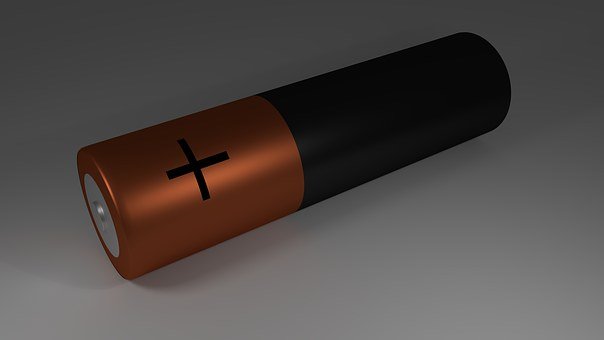Even though most automobile batteries are 12-volt, the ampere rates vary based on store capacity and intended job.
Understanding your battery’s amp rating is also useful when its capacity degrades over time and it has to be charged or changed. So, how many amps are in a 12 volt battery?
It depends on several factors and accurate calculation. However, as general, a 12v battery can have 20-50 Ah range of ampere.
Thus, this article will explain to you how many amps are in a 12-volt battery and how to rate, test, and charge 12-volt vehicle batteries.
Amps! What Is That?
First thing first! You need to know what amps stand for and what does that means to better understand how it is related to car batteries.
Amps is a short form of Amperes. It is the SI unit of electric current. Amps is measured by the electromagnetic force between electrical conductors transmitting electric current.
This is necessary to understand for knowing more about batteries.
What is Ampere Rating?
Before we can get a proper answer on vehicle batteries amperage, we must first discuss ampere ratings. In this case, the rating refers to the amount of electrical storage capacity that a specific automobile battery can retain.
This figure typically runs from 550 to 1000 amperes and is determined by the kind and size of the automobile battery.
Whenever it pertains to vehicle batteries performance, the majority of people are always concerned with the two most crucial car battery amperage ratings.
These are Cranking Amperes (CA) and Cold Cranking Amperes (CCA). It’s no surprise that most buyers place a premium on these two crucial battery ratings.
CA is the current provided by the batteries to start the automobile engine at 0 degrees Celsius (32 degrees Fahrenheit), whereas CCA is the current required to start the engine at − 18 degrees Celsius (O oF).
In all situations, the battery provides around 30 seconds of current at 1.2 volts per battery cell.
The main difference between these two ratings is the temperature. If you have a higher CCA of the batteries, you will get better performance in cold weather.
| CCA or Cold Cranking Amps The CCA, or Cold Cranking Amps, is a simple concept. It is a way of measuring Amps of a battery. Simply defined, the CCA is the highest number of amps that a 12-volt battery can produce for 30 seconds at 0 degrees Fahrenheit. Higher CCA means it can provide more energy at the starting. What is Reserve Capacity? Reserve capacity is described as the number of minutes a fully charged 12-volt battery at 80 degrees Fahrenheit can supply 25 amps at 10.5 volts before the voltage drops. |
How Many Amps Are In A 12 Volt Battery?
A standard 12-volt vehicle battery really has a 48 AH capacity. With a full charge, the battery can deliver around one amp for two days. Alternatively, it may provide approximately 2 amps for a full day. The same is true for similar ratios.
AH stands for amp hour in this context. This is battery energy capacity. It is discovered by calculating the real continuous current of batteries.
After that, the number is multiplied by the discharge time. This same quantity is equivalent to one amp hour.
Measuring Car Battery Amps
You have now got the idea about how many amps are in a 12-volt battery. It is time you learned how to measure car battery amps.
This information may be obtained using a battery tester. Test your battery’s current power with a digital multimeter if you have one.
For example, instead of telling you how much power the batteries have, a digital multimeter will tell you how much voltage it has. Car batteries should all register 12.6 volts when completely charged, and this measurement is more consistent. If you want to know how many amps your batteries have, you’ll need to do some arithmetic.
For example, voltage is measured in volts and current is measured in Amps (or watts).
If you know the resistance of the batteries, you can use Ohm’s Law to calculate the amps from the voltage: I=V/R, or current equals voltage divided by resistance. Your battery’s ohm rating should be mentioned on the packaging.
Set the multimeter to DC to calculate the current-voltage of your batteries. Now, place the multimeter’s red lead on the positive battery terminal (typically red and labeled with +).
Next, connect the black lead to the negative end (which is usually black and marked with a −).
| Multimeter reading | Percent of charge remaining |
| 12.6 | 100% |
| 12.4 | 75% |
| 12.2 | 50% |
| 12 | 25% |
| 11.9 or below | Basically dead |
If you know the overall amp capacity of your batteries, you can do some fast arithmetic to figure out how many amps are left. A 1000-amp battery, for example, with 50% capacity currently stores 500 amps.
Why More Amp Hours for Longer C-Ratings?
You may be thinking why a battery delivers more power when it operates for a longer period of time rather than less energy when it runs for a shorter period of time.
It is logical to believe that a battery that has been operating for 100 hours will give less amp hours than a battery that has only been running for five hours, because the battery needs conserve power in order to live.
The fact is that quickly discharging batteries generate a lot of heat. The heat has a detrimental impact on the battery’s effectiveness.
As a result, when you rapidly drain a C-5 battery, you lose part of its potential power simply because the battery gets hot. Likewise, the C-100 battery is draining at a far slower and more efficient rate.
Verdict
Knowing your car batteries is crucial for buying the right one. If you do not know the right specifications you might find it difficult while buying one.
Hence, to know how many amps are in a 12 volt battery and how you can measure it can help you check if your batteries are running good or you need some fixing to do.
Related Posts:

